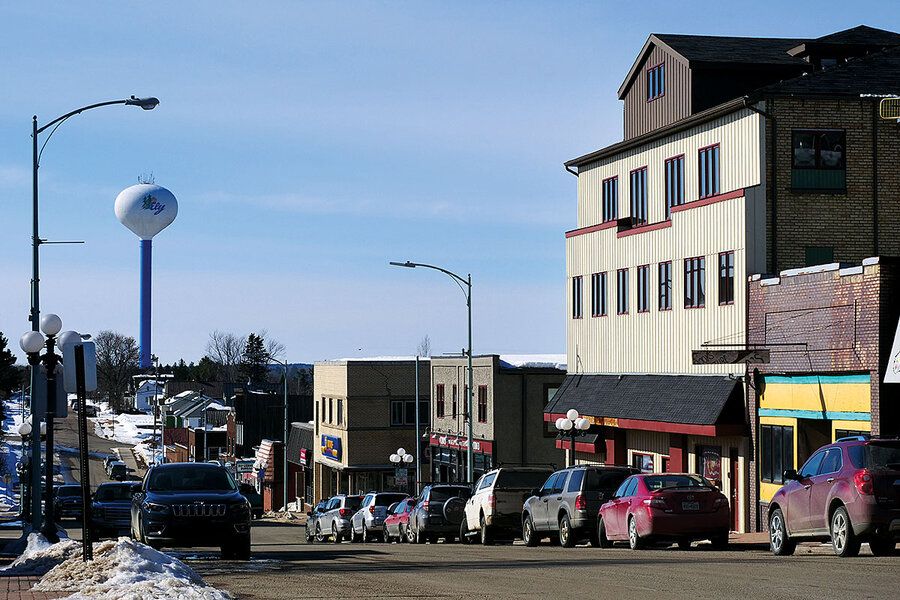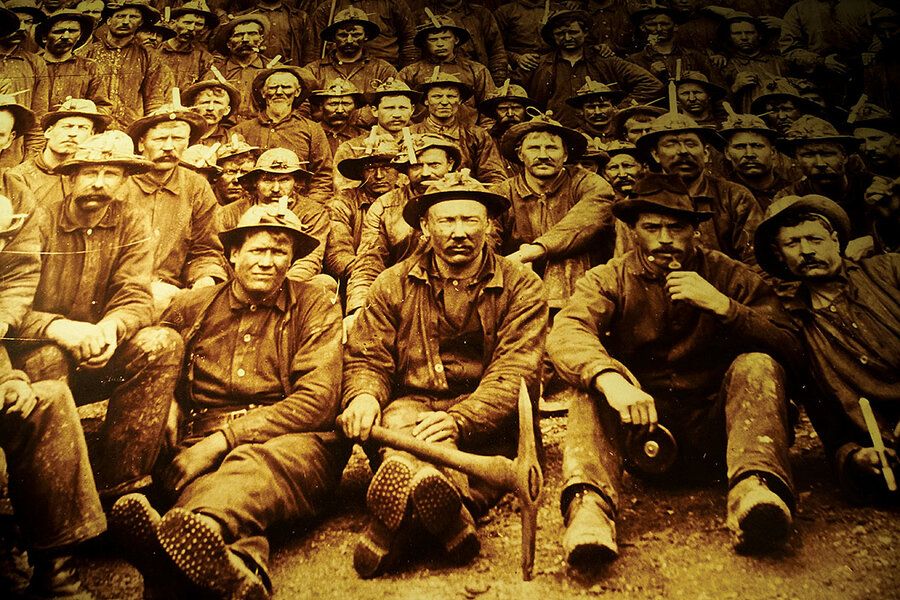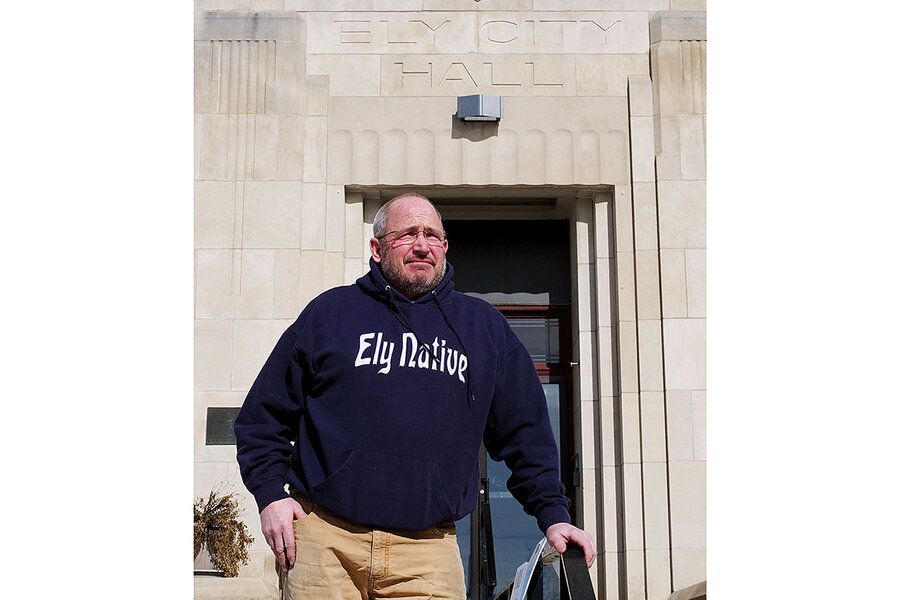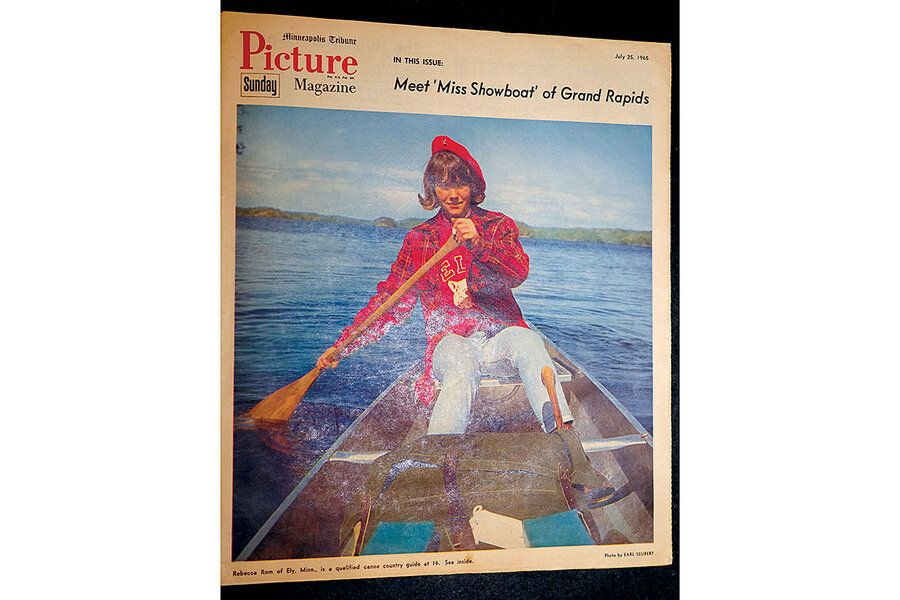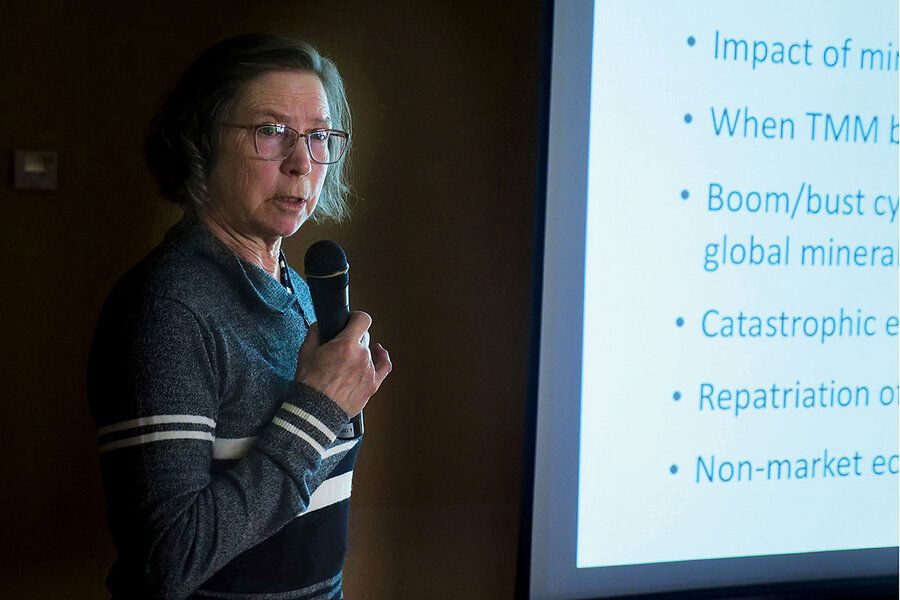Becky Rom grew up in a family of well-known environmental advocates who ran an outfitting company in this tiny town on the edge of the pristine Boundary Waters Canoe Area Wilderness (BWCA) in northern Minnesota. She led wilderness trips from a young age and received national attention on television shows and in magazines as the “girl guide.”
In seventh grade, she famously defended the preservation of the BWCA in a public debate before 150 of her classmates. All but one – her boyfriend – voted against her. Today, nearly 60 years later, Ms. Rom is still championing the safeguarding of the wilderness area, and her entreaties are still being rejected by locals.
Which is why at an Ely City Council meeting in early March she appears to be the most reviled person in the room. Once again, she has turned the topic to Twin Metals, a proposed billion-dollar mining project to be located a few miles away from the BWCA. Ms. Rom fiercely opposes it. Most of the people in the room – many of the people in town – support it. No one wants to hear from Ms. Rom, including the mayor, Chuck Novak, who nevertheless bangs his gavel dutifully and warns the growling crowd to quiet down. The diminutive Ms. Rom, who has forded raging rivers and survived weekslong treks through the Alaska bush, remains unfazed.
With her forceful trial lawyer’s voice, she urges town leaders to denounce attacks on business owners who voice opposition to Twin Metals, the massive mining project that would tap into one of the largest undeveloped copper, nickel, and cobalt reserves in the world. Businesspeople who have spoken out against the mine have faced repercussions. Earlier this year, after the Minnesota Chippewa Tribe echoed concerns that Twin Metals would pollute the Boundary Waters, the mayor called on organizations to stop hosting events at a Native American casino.
On this night, Ely’s elected leaders unanimously defend the mayor’s actions, cheered on by the crowd. The unsubtle subtext is that anyone against Twin Metals is against “our way of life” – mining. “I do not want the City Council kowtowing to these environmental bullies,” one resident warns.
The impassioned council meeting is just the latest in a prolonged clash reverberating through the north woods over the fate of one of the most controversial mining projects in the United States.
In many ways, it is a classic development-versus-environment dispute that has played out elsewhere across the country. Supporters see the project as a form of economic salvation, believing the mine can operate safely while bringing hundreds of well-paying jobs – at least for the 25 years Twin Metals is projected to stay open. Critics worry about sullying a natural treasure and ruining a regional economy increasingly built on recreation and outdoor splendor.
“It’s one or the other,” Ms. Rom says. “[Mining] brought us here. But that’s the past. And we are something different than that now.”
Yet there are deeper forces at work that make the fight here more fraught than most. Mining is in the DNA of most people in Ely and the surrounding towns that lie in or near the state’s three iron ranges, diagonal streaks of ore-laced land running parallel with the shore of Lake Superior as they converge upward into Canada. Historically, Minnesota was the center of U.S. iron ore mining and supplied the raw material for almost three-quarters of America’s iron during World War II. Generations of families worked the massive open pits and rabbit-warren underground tunnels that helped defeat Hitler and buoy local economies. Yet no mines have operated around Ely for more than 50 years, which is why the project by foreign-owned Twin Metals is so coveted.
At the same time, however, the vast BWCA is one of the crown jewels of American wilderness. A necklace of interconnected lakes and streams, it encompasses more than a million acres of federally protected land that draws tens of thousands of visitors a year. Campers venture out into the untrammeled waters for days without seeing another person or hearing anything but the soprano trill of a loon.
As a result, the controversy over Twin Metals is about more than copper or conservation. It’s about the identity of a region. And at this point at least one thing seems certain: In the land of Minnesota nice, nothing is convivial about Twin Metals.
Bygone boomtown
Ely is a hard place to earn a living, especially for young people and particularly during the long winter before the summer crowds arrive. “We are not a sustainable town year round, no matter how you candy coat it,” reads a note posted on the door of a closed liquor store in March, explaining that the business would reopen in the summer.
Many shops and restaurants practically hibernate through the winter, and on the main road into town several buildings stand vacant, including a former Shopko store and the failed Mexican joint Two Gringos. A water tower with blue cursive letters spelling out Ely draws visitors into a downtown of cafes and outfitting shops for canoe trips, their windows pitching Boundary Waters paraphernalia. Nearby Miner’s Lake affords residents a pleasant view, but to old-timers it symbolizes something more poignant. Before it filled with water, Miner’s Lake was a huge pit from which five mines excavated millions of tons of iron ore, beginning in the 1880s and running until 1967, when the last one, the Pioneer, shut down and 450 people lost their jobs.
These days remnants of the Pioneer stand as a museum run by a handful of former miners, including Bill Erzar, who serves as a volunteer tour guide. Sturdy from three decades in mining, Mr. Erzar is the grandson of a Slovenian immigrant who arrived in Ely in 1909 and worked underground for 45 years.
At the turn of the century, Finns, Slavs, and other immigrants dug the ore by candlelight, and it took 24 hours for a team of men to advance a tunnel six feet horizontally, chipping away with pickaxes and sledgehammers. Mr. Erzar’s father worked in the Pioneer, and escaped death one night 1,300 feet below ground when a torrent of mud broke through a wall and nearly swept him away; he grabbed a handrail and was rescued.
A sign in the Pioneer mine museum reads, “Grampa, tell me about the good old days.” But not all of it was good: Mr. Erzar’s grandfather was fired three times, twice for organizing workers and once for trying to build a Slovenian library. The mining companies at the time ran towns like Ely with fists of iron and preferred their laborers unorganized.
The mine companies did, however, pour funding into excellent schools, hospitals, and other infrastructure, and Ely’s mix of clannish immigrants implanted a lasting culture of saunas and stable family life. Like his fellow miners, Mr. Erzar earned high wages with health benefits and retired on a comfortable pension.
“Let me tell you Ely was booming during those days and it was going good,” Mr. Erzar says from behind a white beard. “Ely was a heck of a nice town.”
Ely’s current population of 3,500 is only about half of what it was during the mining heyday.
Ely Native
For decades, Mr. Erzar relished waking up at 4 a.m. to get out on the water with a buddy by sunrise. Six hours of canoe paddling and many portages later, they’d be at a favorite spot fishing for walleye. He’s traveled to dozens of lakes in the region, and recites their names like old friends.
“It’s a big part of us, you know?” he says. “And we certainly don’t want it screwed up.”
Ely’s Chamber of Commerce markets the Boundary Waters as “the last great pure experience” and everyone who visits seems awed by its interconnected lakes and the solitude found within them.
But as many Twin Metals supporters will explain with a knowing smile, it wasn’t always this way. The Boundary Waters used to be lined with resorts and homes, and power boats prowled its waterways. As conservation efforts picked up, the area became protected from development through the sweeping 1964 Wilderness Act, which was refined further in 1978 with a federal law that officially designated it the Boundary Waters Canoe Area Wilderness. During this time, logging was banned, motor transport severely reduced, and all resorts within the BWCA removed.
The resorts were owned by people Mr. Erzar knew, many of whom invested their life savings in them. They felt they didn’t receive fair compensation from the government. “It was devastating to this community,” he says. “Lots of my friends’ families lost everything fighting the government to keep their property.”
Ms. Rom’s father had been at the center of the battle to protect the Boundary Waters for good. Residents burned effigies of environmentalists in protest and picketed the Roms’ outfitting company. The resentment lingers. “Is there a bad taste in my mouth? Absolutely,” says former Ely Mayor Roger Skraba. “Will it go away? When I’m dead.”
Mr. Skraba wears a custom-made sweatshirt that reads “Ely Native.” He makes his living as a local wilderness guide and carpenter, and has a reputation for gleefully flouting Boundary Waters rules (while mayor he was once caught stealing a Forest Service toilet). He sees the current campaign against Twin Metals as another instance of Ms. Rom and liberal environmentalists trying to impose their values on others.
Early in the mine’s development, Mr. Skraba met with Jean Paul Luksic, the Chilean billionaire whose family owns Antofagasta Minerals, the parent company of Twin Metals Minnesota. Even though Antofagasta has long been accused of flouting environmental regulations in Chile, Mr. Skraba says “the big cheese” left a good impression, leading him to believe the company will respect the Boundary Waters.
Like other Twin Metals supporters, Mr. Skraba is unconvinced that harmful pollution from the mine is inevitable, especially since mining has long existed in the region. Yet there are no active copper mines in Minnesota, and Twin Metals opponents note that all of Ely’s mines produced high grade iron ore, a much cleaner process than Twin Metals’ copper mining would be. The iron ore dug up in Ely’s old mines was generally so pure it required no further refinement and could be sent directly to steel mills. In contrast, less than 4% of the millions of tons of raw material the mine will dig up from the ground here will be copper, nickel, or a valuable mineral.
Twin Metals will mine underground – unlike open-pit copper mines that generate bigger footprints – and the ore will be processed on site, leaving the rest as waste. The ore contains sulfide, which when exposed to oxygen and water, leaches acid, a major problem for copper mines. While extracting the valuable minerals, Twin Metals plans to remove most of the sulfide and then store the remaining crushed ore as “dry stack tailings” – finely ground, low-moisture piles of waste contained with lining. Around half the tailings will be used to refill the mine, and the other half will be stored above ground, on land reclaimed by vegetation over time and close to the shore of a river flowing into the Boundary Waters.
In an email, Twin Metals spokesperson Kathy Graul calls dry stack “the gold standard” for dealing with mining waste, explaining that “we know based on years of research and data collected that our tailings will be non-acid-generating.”
On its website, Twin Metals says dry stack has “proven successful” in several other mines in cold, wet climates similar to Minnesota’s. But near one of those mines, Greens Creek in Alaska, there have been reports of high levels of mercury in the surrounding area. So there remain concerns of whether a similar storage system will work effectively near the Boundary Waters.
For Mr. Skraba, the former mayor, it’s a risk worth taking. “I just think there is a higher purpose for this project,” he says.
Political pushback
The former manager of special projects at Twin Metals, David Oliver, sips a drink inside his Ely home and confides that despite being born in Minnesota it was “the last state I ever, ever, ever wanted to come back to.” It’s the land of labor activists and Gus Hall, the late longtime chairman of the Communist Party USA. But, Mr. Oliver says, he was compensated well and the work appealed to him.
In 2007, when Mr. Oliver first started test drilling in the Duluth Complex, the geologic site Twin Metals plans to mine, he and his team couldn’t miss hitting rich mineral deposits for months. Twin Metals claims its site contains 99% of U.S. nickel reserves, 88% of its cobalt reserves, and a third of the nation’s copper reserves. Everything from wires to solar power requires copper, and cobalt is used for lithium-ion rechargeable batteries. Mr. Oliver points out these materials are used by everyone, including critics of the mine, and are going to have to come from somewhere.
“They hate the country,” he says of liberals, or the “anti’s” as they are known in Ely (as in anti-development of any kind). “They hate the flag. They hate the military. They hate God. They hate anything that has to do with resource extraction.”
Mr. Oliver was chairman of the Ely area Republican caucus, which met in late February in a room where residents used Twin Metals’ pens to sign in and a poster on a stand read: “We support mining and clean water, we can have both!”
As chairman, Mr. Oliver read a message from Ely’s congressional representative, Pete Stauber, reminding attendees that “our way of life is still under attack” and asking for their help in “unleashing the economic engine” in the district by supporting the mine. In 2018, Mr. Stauber, a Republican, flipped Minnesota’s northeast 8th Congressional District campaigning in favor of Twin Metals. Most of the people in the state’s biggest iron range, the Mesabi, backed him, but he was solidly defeated in the county encompassing Ely and the two other counties containing the Boundary Waters.
The GOP caucus also made a point of renouncing a federal bill introduced this year by Democratic Minnesota Rep. Betty McCollum, which would ban copper-nickel mining within the watershed of the Boundary Waters, including where Twin Metals would operate. Though the bill does not affect taconite mining – the most prevalent form of mining in the state – it has been portrayed as designed to shut down all resource extraction in Minnesota.
Twin Metals first became politicized in the last days of the Obama administration, when the U.S. Forest Service and Bureau of Land Management declined to renew Twin Metals’ leases to operate on federal land, saying the inherent risks of copper-nickel mining near the Boundary Waters were too great. Ms. Rom’s national Save the Boundary Waters campaign played a major role in convincing the government to block the mine before it could go through the standard environmental review processes, which drew criticism from the Star Tribune, Minnesota’s largest newspaper and no fan of Twin Metals, in its editorial pages. It warned the decision could “backfire,” leading to more egregious political interference under the incoming administration of Donald Trump.
Ms. Rom is unapologetic about her hard-line stance on Twin Metals. “If you believed that there is no way the Boundary Waters would be protected with a mine no matter how good it is, you say no mining,” she says.
She believes state and federal mining regulations are not sufficient to maintain the integrity of the Boundary Waters, an opinion shared by the former head of Minnesota’s Department of Natural Resources, which conducts environmental reviews of proposed mining projects. Both note that existing regulations permit some degradation and fail to address the specific risks of Twin Metals. Since the mine would be located mere miles downstream from the Boundary Waters, Ms. Rom argues any pollution is unacceptable for a federally protected wilderness.
But her uncompromising approach has alienated many local residents, including fellow Democrats like Mr. Erzar, the museum guide and outdoor enthusiast.
“I think it’s counterproductive,” he says. “If that happens all over the country, what good are any of the rules and regulations if you can’t follow what’s been established to do what’s environmentally responsible?”
Even though northeastern Minnesota has long been a liberal, pro-labor stronghold, many people now back Mr. Trump, whose administration has aggressively supported Twin Metals. Shortly after taking over, the Trump administration reinstated the mine’s leases and removed regulatory obstacles in order to greenlight the project. This included halting and then refusing to release a Forest Service study assessing the environmental impact of copper-nickel mining on the Boundary Waters watershed.
Environmental groups have since sued the federal government, claiming it didn’t properly assess Twin Metals’ impact when renewing its leases. Meanwhile, last December, Twin Metals released its detailed plan of mining operations, triggering a multiyear environmental review process for federal and state agencies to study the mine.
“The truth is, the environmental review process is not intended to stop projects,” former Minnesota Senate minority leader and Twin Metals advocate Tom Bakk told Ely residents last year. “It’s intended to mitigate impacts, so once they [Twin Metals officials] start down that road of applying for those permits, it’s pretty hard to stop.”
“Amenity migrant”
Lifelong Iron Range resident and well-known blogger Aaron Brown has watched the local economy struggle to diversify for decades. The region continues to fall back on mining, with all its inherent instability.
While mining jobs are some of the highest paid in the Iron Range – at upward of $25 an hour, well above minimum wage seasonal work – fewer than 4,000 people are now directly employed in the industry across the state, according to the Minnesota Department of Revenue. Cutbacks in mining keep coming amid international competition and increasing automation. Even in major Iron Range towns like Virginia, which still have active iron ore mines, the poverty rate can be as high as a quarter of the population. It hasn’t helped that hundreds of miners have been laid off as companies have idled production amid the global pandemic – an all too familiar phenomenon for the region, where 10,000 miners lost jobs in the 1980s.
“We feel this existential threat to the culture and want to preserve ourselves,” Mr. Brown says. “The paradox is that the very act of preserving our culture is destroying our economy.”
Ely has a uniquely diversified economy that allows it to avoid the volatility of the rest of the Iron Range, argues retired World Bank economist Kris Hallberg, an Ely resident. She believes that the Boundary Waters provides the town an alternative economic pathway. This would tie in to a broader national trend that has seen recreation outpace mining in driving economic growth. And besides the vacant buildings, Ely exhibits a lot of vibrancy – it has a community college, a renowned wolf center, art galleries, hundreds of operating businesses, and a range of festivals that locals stage each year.
During a public presentation for Ely residents in March, Ms. Hallberg shared the findings of an analysis by a Harvard University economics professor that projected Ely’s future with and without the mine.
Twin Metals estimates it will bring at least 700 direct jobs and 1,400 spin-off ones, and the analysis found this would undeniably benefit the region, Ms. Hallberg told her audience. But the gains would be short-lived once the mine shut down after its projected 25-year lifespan and would undercut the outdoors-based economy that, along with tourists, has drawn entrepreneurs and professionals to live and work near the Boundary Waters. (Ms. Graul, the Twin Metals spokesperson, says the study was “based on incorrect data and erroneous assumptions.”)
“I am a proud amenity migrant,” says Ms. Hallberg, who spent more than 10 years consulting remotely from her Ely home. “I was a classic case of someone who first came here on a Boundary Waters trip, realized I wanted to live here, and made it happen.”
While there has been a decrease in visitors to the Boundary Waters in the past decade, people are still choosing to invest in Ely and tie their lives to the town because of the unique outdoor opportunities nearby.
Tanner Ott, originally from Missouri, hasn’t missed a summer in Ely. In the past few years, Mr. Ott and his family began investing in Ely real estate in an ambitious effort to revitalize the downtown. They’ve since bought about 15 buildings to rent to small businesses, including a successful coffee shop, wine bar, granola manufacturer, and theater. “We can’t count on a mine,” says Mr. Ott, who has not been involved in the mining debate. “We’ve made these investments not knowing what’s going to happen. We feel like they’re good investments, no matter what.”
Ely isn’t just sitting around waiting for the mine either, says Harold Langowski, clerk-treasurer and operations director of Ely. The town is busy stringing fiber optic cables to improve internet connectivity for businesses and professionals in its downtown, and constructing all-terrain vehicle and mountain biking trails to entice more visitors. And even though the conflict over mining has come to dominate the town, people on both sides have Ely’s best interests at heart, Mr. Langowski adds.
“Everyone is trying to do what they feel is right for their community and their family,” he says. “Pretty hard to fault anyone for that.”
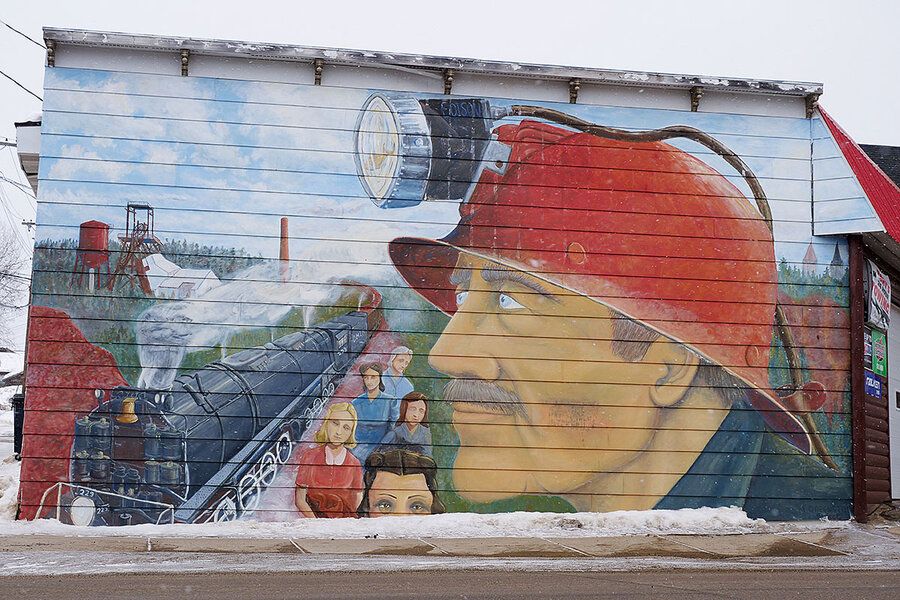
![“It’s one or the other. [Mining] brought us here. But that’s the past. And we are something different than that now.” – Becky Rom, leader of the Save the Boundary Waters campaign who has been guiding wilderness trips in the area since she was a teenager. Image by Jack Brook. United States, 2020.
“It’s one or the other. [Mining] brought us here. But that’s the past. And we are something different than that now.” – Becky Rom, leader of the Save the Boundary Waters campaign who has been guiding wilderness trips in the area since she was a teenager. Image by Jack Brook. United States, 2020.](https://legacy.pulitzercenter.org/sites/default/files/styles/node_images_768x510/public/0622_mining_becky_rom.jpg?itok=1-PNyGDe)
